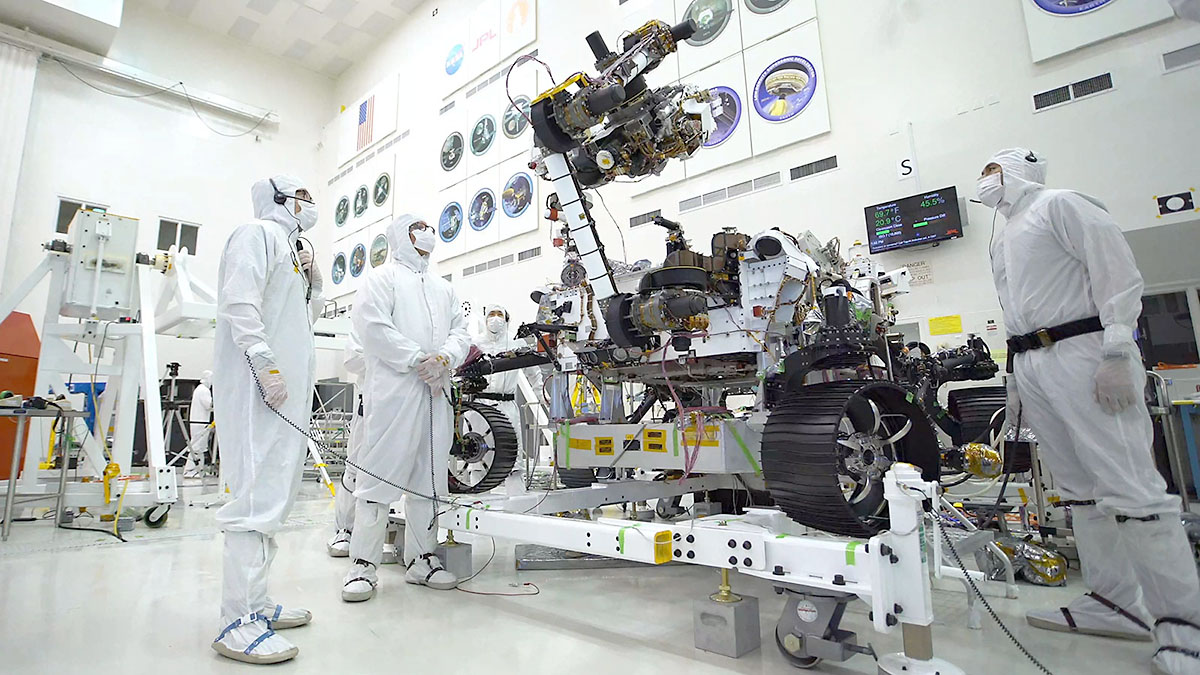 Pasadenca, CA – NASA’s Mars 2020 rover’s robotic arm is able to curl heavy weights. On July 18th, 2019, the time-lapse video below was, taken in the clean room of the Spacecraft Assembly Facility at the Jet Propulsion Laboratory in Pasadena, California, the rover’s 7-foot-long (2.1-meter-long) arm handily maneuvers 88 pounds’ (40 kilograms’) worth of sensor-laden turret as it moves from a deployed to a stowed configuration.
Pasadenca, CA – NASA’s Mars 2020 rover’s robotic arm is able to curl heavy weights. On July 18th, 2019, the time-lapse video below was, taken in the clean room of the Spacecraft Assembly Facility at the Jet Propulsion Laboratory in Pasadena, California, the rover’s 7-foot-long (2.1-meter-long) arm handily maneuvers 88 pounds’ (40 kilograms’) worth of sensor-laden turret as it moves from a deployed to a stowed configuration.
The rover’s arm includes five electrical motors and five joints (known as the shoulder azimuth joint, shoulder elevation joint, elbow joint, wrist joint and turret joint).

The rover’s turret includes HD cameras, the Scanning Habitable Environments with Raman & Luminescence for Organics & Chemicals (SHERLOC) science instrument, the Planetary Instrument for X-ray Lithochemistry (PIXL), and a percussive drill and coring mechanism.
On Mars, the arm and turret will work together, allowing the rover to work as a human geologist would: by reaching out to interesting geologic features, abrading, analyzing and even collecting them for further study via Mars 2020’s Sample Caching System, which will collect samples of Martian rock and soil that will be returned to Earth by a future mission.
“This was our first opportunity to watch the arm and turret move in concert with each other, making sure that everything worked as advertised – nothing blocking or otherwise hindering smooth operation of the system,” said Dave Levine, integration engineer for Mars 2020.
“Standing there, watching the arm and turret go through their motions, you can’t help but marvel that the rover will be in space in less than a year from now and performing these exact movements on Mars in less than two,” stated Levine.
Mars 2020 will launch from Cape Canaveral Air Force Station in Florida in July 2020. It will land at Jezero Crater on February 18th, 2021.
JPL is building and will manage operations of the Mars 2020 rover for the NASA Science Mission Directorate at the agency’s headquarters in Washington.
To submit your name to travel to Mars with NASA’s 2020 mission and obtain a souvenir boarding pass to the Red Planet, go here by September 30th, 2019:
https://go.nasa.gov/Mars2020Pass
For more information about the mission, go to:



